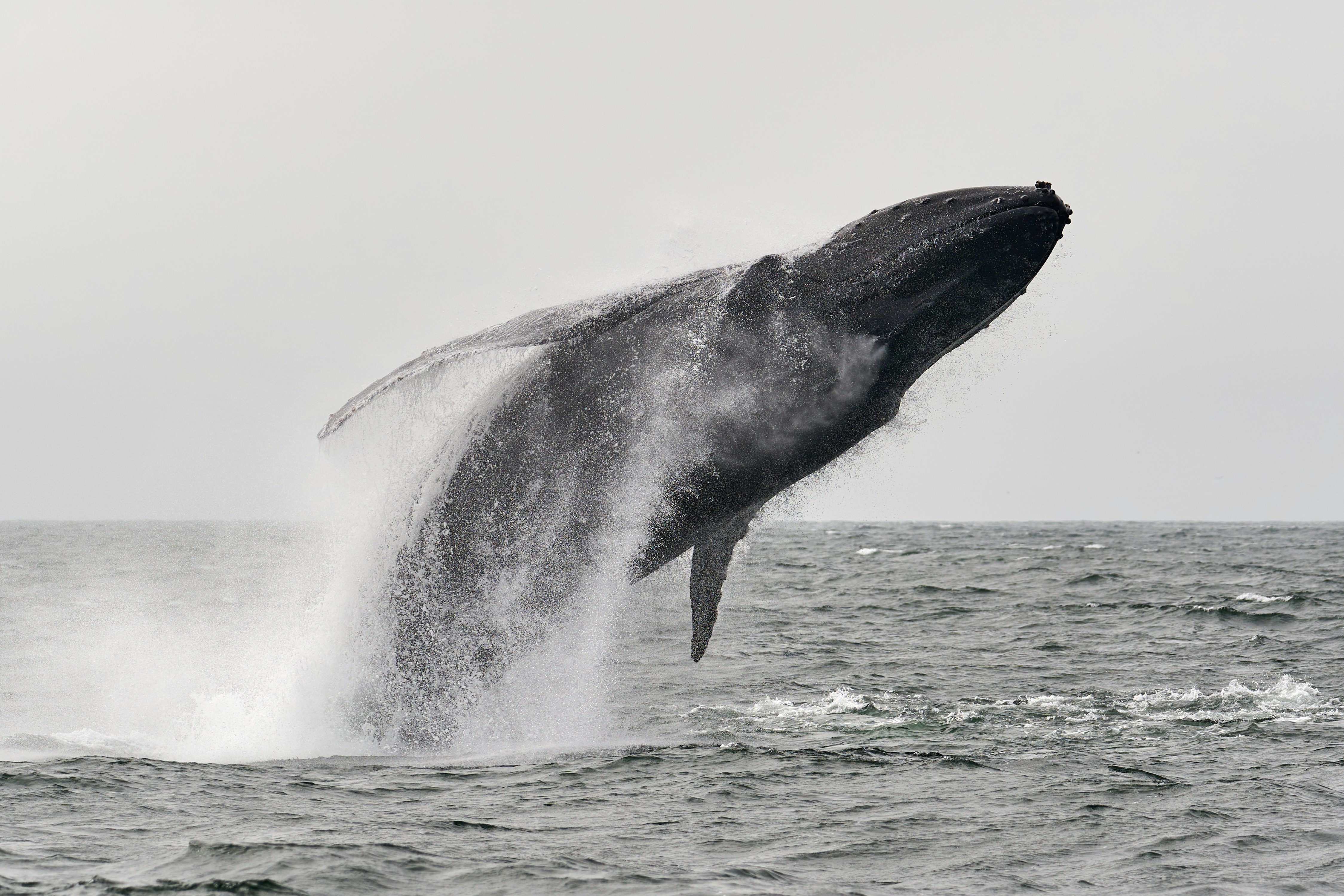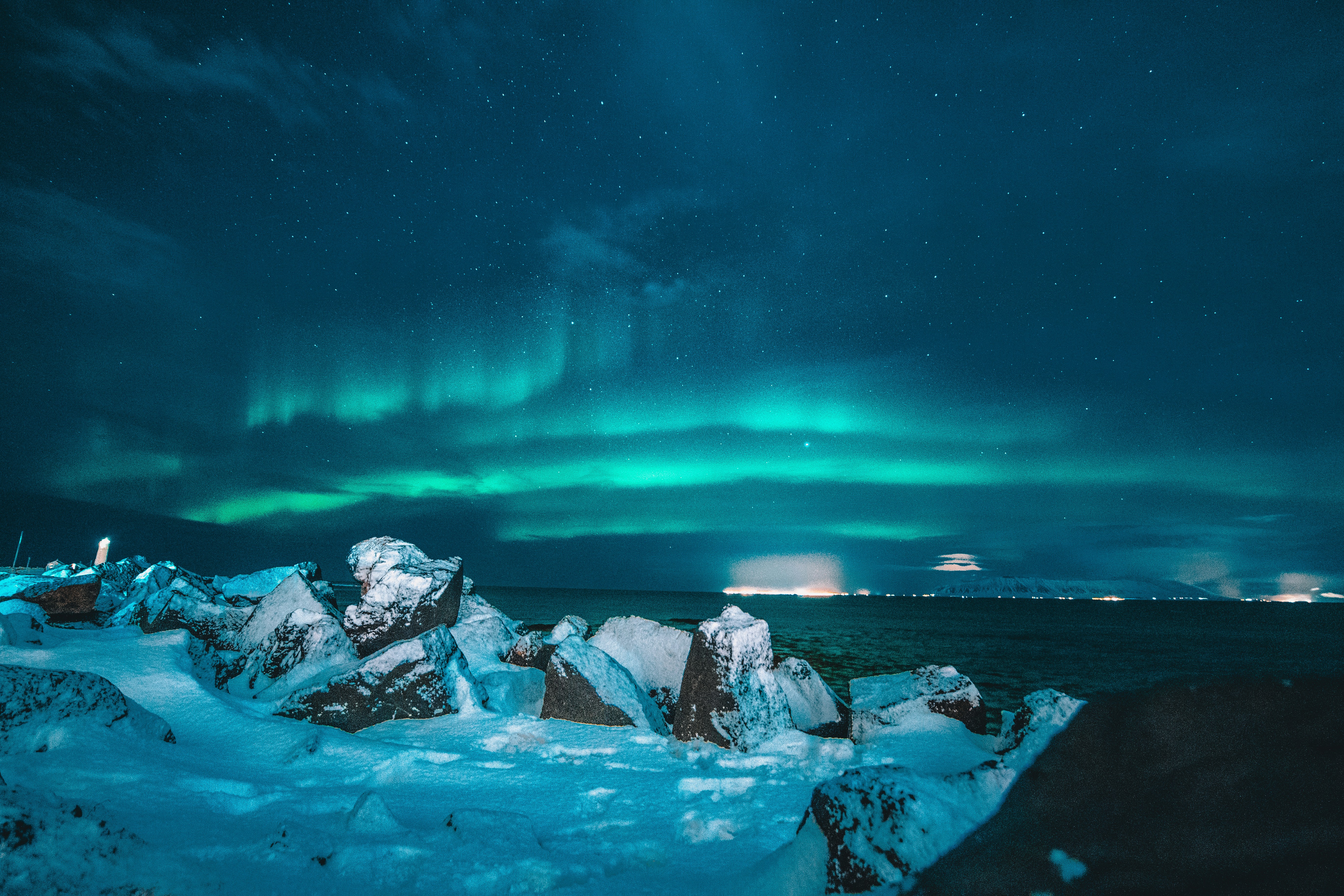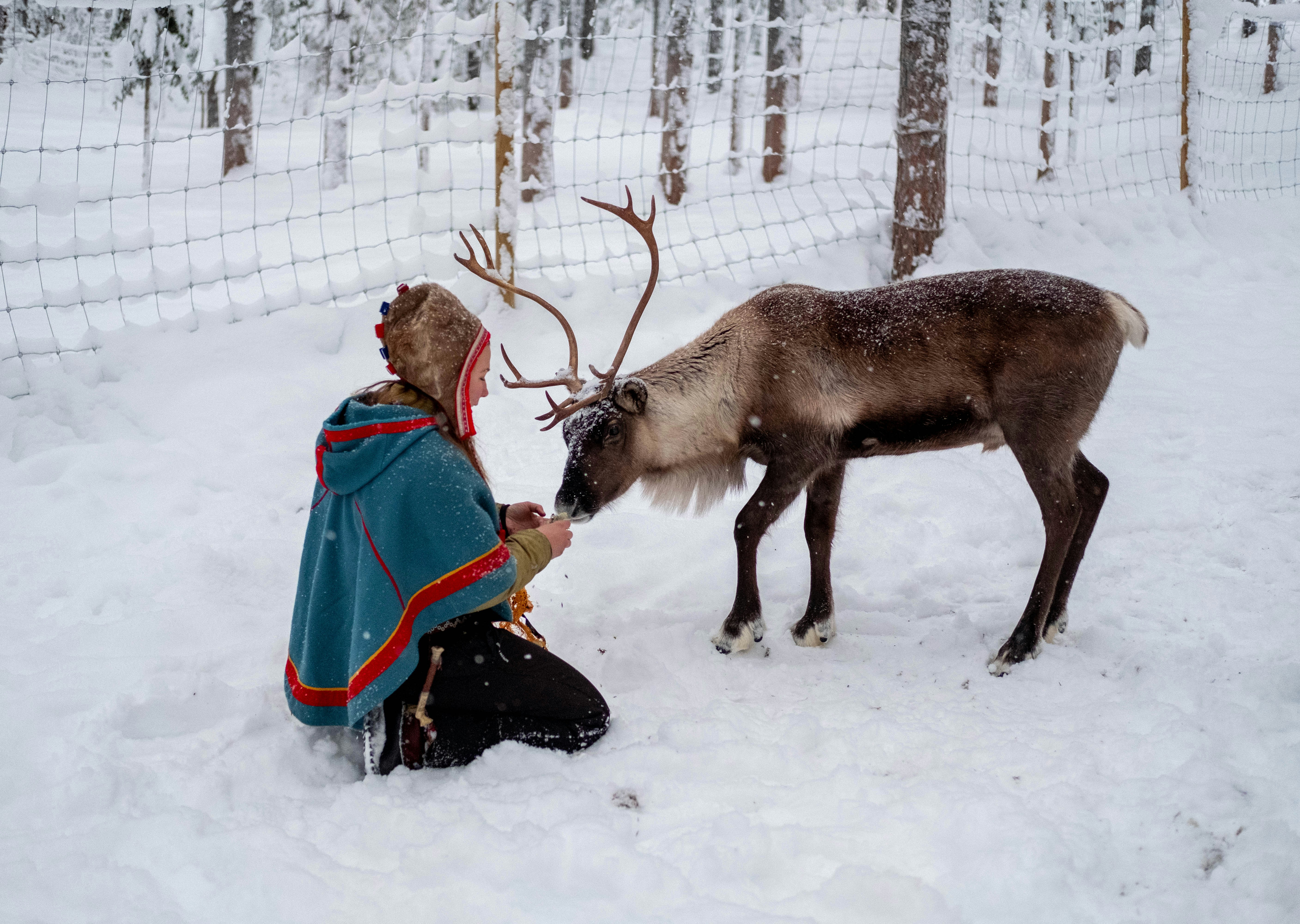Complete Guide to Lyngen Wildlife: Whales, Reindeer, and Arctic Birds
Discover the incredible Arctic wildlife of Lyngen Peninsula. From whale watching safaris to reindeer encounters and spectacular bird photography opportunities.
Complete Guide to Lyngen Wildlife: Whales, Reindeer, and Arctic Birds
The Lyngen Peninsula stands as one of the Arctic's premier wildlife destinations, where pristine fjords meet dramatic mountain landscapes to create perfect habitats for an extraordinary diversity of species. From the depths of the Norwegian Sea to the highest mountain plateaus, wildlife encounters here offer glimpses into the remarkable adaptations and behaviors of Arctic animals.
Whale Watching: Giants of the Deep
The Great Herring Migration
Every winter, billions of herring migrate to the fjords around Lyngen Peninsula, creating one of the world's most spectacular marine wildlife phenomena. This massive food source attracts an impressive array of whale species, making winter whale watching in Lyngen truly exceptional.
Peak Whale Season: November through February Species Diversity: Orcas, humpback whales, fin whales, sperm whales Viewing Success Rate: 95%+ during peak season
Orca Encounters
Killer whales arrive in large family pods, following the herring schools into the fjords. These intelligent apex predators display remarkable hunting strategies:
- Cooperative Hunting: Coordinated attacks on herring balls
- Carousel Feeding: Stunning prey with powerful tail slaps
- Family Bonds: Multi-generational pods with distinct dialects
- Intelligence: Tool use and complex social behaviors
Best Orca Viewing Locations:
- Ullsfjord: Deep waters with reliable herring concentrations
- Lyngenfjord: Protected waters with excellent boat access
- Storfjord: Open water encounters with large pods
Humpback Whales
These massive baleen whales can reach 15 meters in length and display spectacular surface behaviors:
- Breaching: Dramatic full-body leaps from the water
- Bubble Net Feeding: Cooperative feeding strategies
- Song Communication: Complex vocalizations during mating season
- Migration: 25,000-kilometer annual migration routes
Marine Wildlife Tours
Whale Safari Options:
- RIB Boat Expeditions: Fast, intimate encounters (2-3 hours)
- Catamaran Cruises: Stable platforms with heated cabins (4-6 hours)
- Photography Tours: Specialized trips for serious wildlife photographers
- Multi-Day Expeditions: Extended wildlife experiences with accommodation
Tour Highlights:
- Professional marine biologist guides
- Underwater hydrophones for whale communication
- High-quality safety equipment and weather gear
- Small group sizes (maximum 12 passengers)
- Guaranteed sighting policy during peak season
Arctic Bird Life
Sea Eagles: Masters of the Sky
The White-Tailed Sea Eagle, with its impressive 2.5-meter wingspan, represents one of Europe's most magnificent raptors. These powerful hunters soar over Lyngen's fjords and mountains year-round.
Hunting Behavior:
- Fish Specialists: Primary diet of salmon, cod, and coalfish
- Opportunistic Feeding: Seabirds, small mammals, and carrion
- Territorial Displays: Spectacular aerial courtship rituals
- Nest Sites: Massive stick constructions on cliff ledges
Arctic Seabirds
Breeding Colonies (May-September):
- Arctic Terns: Incredible 70,000-kilometer annual migrations
- Common Guillemots: Dense cliff-nesting colonies
- Kittiwakes: Graceful gulls with distinctive black wing tips
- Razorbills: Distinctive large, flattened bills
Winter Visitors:
- King Eiders: Spectacular Arctic sea ducks
- Ivory Gulls: Rare high-Arctic specialists
- Snowy Owls: Occasional irruptive visitors
Bird Photography Opportunities
The diverse habitats around Lyngen provide exceptional bird photography:
- Coastal Cliffs: Seabird colonies and nesting sites
- Fjord Waters: Diving ducks and marine species
- Mountain Plateaus: Ptarmigan and alpine specialists
- Forest Edges: Woodland species and migrants
Reindeer: Living Symbols of the Arctic
Sami Reindeer Herding
The indigenous Sami people have herded reindeer for over 1,000 years, developing sustainable practices that work in harmony with natural migration patterns. Today, several Sami families continue this traditional lifestyle around the Lyngen Peninsula.
Traditional Practices:
- Seasonal Migrations: Following ancient routes between summer and winter pastures
- Selective Breeding: Maintaining genetic diversity and hardiness
- Sustainable Harvesting: Respectful use of all reindeer products
- Cultural Integration: Reindeer central to Sami identity and livelihood
Reindeer Behavior and Adaptations
Arctic Specializations:
- Hooves: Specialized for snow travel and lichen foraging
- Vision: Can see ultraviolet light to detect predators and food
- Metabolism: Efficient energy conservation during harsh winters
- Social Structure: Complex herd dynamics and communication
Seasonal Patterns:
- Spring: Calving season and movement to summer pastures
- Summer: Active feeding on rich mountain vegetation
- Autumn: Mating season with dramatic displays
- Winter: Survival mode with reduced activity
Ethical Reindeer Encounters
Recommended Experiences:
- Sami Cultural Centers: Learn traditional knowledge and practices
- Reindeer Farms: Close encounters with semi-domesticated herds
- Guided Wilderness Tours: Observe wild reindeer in natural habitats
- Photography Workshops: Capture reindeer behavior respectfully
Viewing Guidelines:
- Maintain minimum 50-meter distance from wild herds
- Never feed or attempt to touch reindeer
- Respect Sami herding operations and traditional rights
- Use telephoto lenses for close-up photography
Marine Mammals Beyond Whales
Seal Populations
Harbor Seals and Grey Seals inhabit the coastal waters around Lyngen Peninsula:
- Habitat: Rocky shores, protected bays, and offshore skerries
- Behavior: Hauling out during low tide for rest and thermoregulation
- Diet: Fish, squid, and crustaceans from surrounding waters
- Conservation: Stable populations with minimal human disturbance
Polar Bears: Rare Visitors
While not permanent residents, polar bears occasionally visit Lyngen Peninsula during exceptional sea ice years:
- Sightings: Extremely rare, typically during late winter/early spring
- Behavior: Usually searching for food or resting during long swims
- Safety: Immediate reporting to authorities required for public safety
Small Mammals and Carnivores
Arctic Fox
The endangered Arctic fox represents one of Lyngen's most elusive species:
- Population: Critically low numbers due to historical hunting
- Habitat: Alpine tundra and coastal areas
- Adaptations: Color-changing coat and specialized hunting techniques
- Conservation: Active protection and recovery programs
Other Small Mammals
- Mountain Hares: Seasonal coat color changes from brown to white
- Lemmings: Population cycles affecting predator abundance
- Stoats: Agile predators with winter white coloration
- Red Squirrels: Forest-dwelling populations in lower elevations
Wildlife Photography Guidelines
Ethical Photography Principles
Respect Wildlife:
- Maintain safe distances using telephoto lenses
- Never bait, feed, or harass animals for photographs
- Avoid sensitive areas during breeding seasons
- Follow "leave no trace" outdoor ethics
Technical Excellence:
- Camera Settings: Fast shutter speeds (1/500s+) for action shots
- Equipment: Weather-sealed gear for Arctic conditions
- Lighting: Work with available Arctic light conditions
- Composition: Include environmental context in wildlife portraits
Safety Considerations
Arctic Wildlife Safety:
- Weather Awareness: Rapid condition changes in Arctic environments
- Emergency Preparedness: Communication devices and emergency supplies
- Local Knowledge: Guided tours for remote wildlife viewing
- Respect Distances: Wild animals are unpredictable and potentially dangerous
Seasonal Wildlife Calendar
Winter (December-March)
- Peak whale watching season with orcas and humpbacks
- Reindeer in winter pastures at lower elevations
- Arctic bird visitors including snowy owls and king eiders
- Excellent wildlife photography with snow-covered landscapes
Spring (April-May)
- Bird migration returns with increasing species diversity
- Reindeer calving season and movement to summer ranges
- Whale activity transitions as herring disperse
- Improving weather conditions for extended outdoor activities
Summer (June-August)
- Seabird breeding colonies at peak activity
- Reindeer in high alpine pastures with calves
- Marine mammal diversity with various whale species
- Optimal weather conditions for wildlife viewing and photography
Autumn (September-November)
- Reindeer rutting season with impressive displays
- Bird migration preparations and flocking behavior
- Early whale arrivals following herring schools
- Aurora season begins adding natural light displays
Conservation and Research
Wildlife Protection Efforts
Conservation Initiatives:
- Marine Protected Areas: Preserving critical whale and seal habitats
- Arctic Fox Recovery: Habitat restoration and captive breeding programs
- Sustainable Tourism: Minimizing human impact on wildlife populations
- Research Collaboration: International studies on Arctic species
Climate Change Impacts
Arctic wildlife faces significant challenges from changing conditions:
- Temperature Changes: Affecting migration timing and habitat suitability
- Ice Conditions: Critical for some species' life cycles
- Food Web Disruptions: Shifting prey availability and distribution
- Human Adaptation: Tourism and conservation strategy modifications
The wildlife of Lyngen Peninsula represents the incredible diversity and resilience of Arctic ecosystems. Every encounter—from the breath-taking moment when a humpback whale breaches beside your boat to the silent observation of a reindeer herd moving across the tundra—creates profound connections to the natural world and lasting memories of the Arctic's living treasures.
Experience world-class wildlife encounters during your stay at Lyngen Seaside, where every season offers unique opportunities to witness the remarkable animals that thrive in this pristine Arctic wilderness.


